
introducing or practicing emotions and recognition
- Subject:
- Early Childhood Development
- Psychology
- Special Education
- Material Type:
- Activity/Lab
- Author:
- CIPPO Egypt
- Date Added:
- 06/21/2022

introducing or practicing emotions and recognition
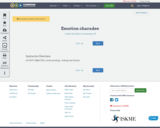
ACTIVITY OBJECTIVE: communicating - making new friends

This four part web broadcast series is aimed at supporting early intervention (EI) and early childhood special education (ECSE) systems leaders with building capacity in personnel and families to develop trusting partnerships. The series features discussions of the role that data play in strengthening family-professional partnerships. Suggestions and resources for designing personnel and family development activities to support partnerships are also shared.
U.S. Department of Education funded Technical Assistance Center - resources are free for online viewing.

This guide makes recommendations based on the best available research evidence about how early childhood services with 3-5 year-olds can engage with families to enhance children’s early learning and development.
1 It sets out ‘promising’ and ‘not promising’ approaches drawn from multiple studies which have measured the effects of different strategies. While there is room for improvements in the quality of available research evidence,
2 these approaches provide ‘best bets’ for guiding practice. This guide also sets out next steps for early childhood services and practitioners to consider how the findings are relevant to them.

This video covers chapter 1 of the college textbook that goes over Child Growth and Development.
This presents how and why children grow, develop, and learn. We will look at how we change physically over time from conception through adolescence. We examine cognitive change, or how our ability to think and remember changes over the first 20 years or so of life. And we will look at how our emotions, psychological state, and social relationships change throughout childhood and adolescence.
This is an adaptation from a free CC by Attribution college textbook, "Child Growth and Development"
Textbook PDF:
https://open.umn.edu/opentextbooks/textbooks/child-growth-and-development
CC BY-NC:
This video is made by an independent production and is reserved under CC BY-NC.
Feel free to use the video as you want non-commercially.
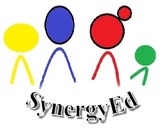
visit our socila media pages:https://www.facebook.com/profile.php?id=100088490787505https://www.linkedin.com/in/synergy-ed-8a7322263/
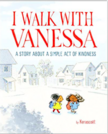
This lesson utilizes the wordless picture book I Walk With Vanessa: A Story About a Simple Act of Kindness. After a whole-class read-aloud, students divide into groups to create dialogues for specific scenes in the book. The activity encourages students to discuss why people choose different roles in a situation allowing collaborative problem solving and practicing how to care for and protect others. The optional fourth and fifth-grade student extension includes analyzing historical examples and discussing why and how people have failed to protect others and how we can be better allies to those being harmed in our communities today.
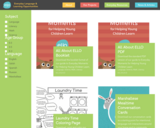
ELLO is short for Everyday Language & Learning Opportunities. And as an organization, ELLO has
the overarching goal of increasing the number of quality, language-rich interactions between
caregivers and young children.
We seek to connect with home routines and community spaces that are routinely accessed
by families, such as grocery stores, laundry mats, public transit, libraries, and outdoor spaces.
Our resources encourage caregivers to talk with their children and are thematically tailored to fit
into familiar routines and community settings.
This is intentional and provides opportunities for conversations throughout everyday routines that
can empower all caregivers to realize how much they have the ability to benefit their child’s life
through something completely free, talking!
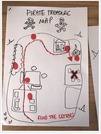
Physical Development Weekly Plan This lesson plan gives an example of a weekly plan a teacher might use that will include activities that promote physical development.

ObjectivesBy the end of this session, we will be able to:● Partner with administrators to develop a realistic,scaffolded action plan for beginning to align CSCPstaff use of time with 5030 and the ASCA NationalModel● Consider how the CSCP will begin to shift this yearto incorporate preventative, proactive,developmentally appropriate Tier 1 activities for ALLstudents

Nebraska FCS Classes: Child Development or Human Growth & Development

Family Child Care Provider's perceptions of quality of training. Providers were interviewed said that trainings help them achieve some mastery experience of content and how to teach, but there was not sufficienttly hands-on activities or continues coaching to develop full mastery.
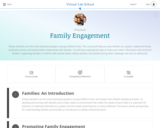
Family members are the most important people in young children’s lives. This course will help you view families as a system, implement family-centered practice, and build positive relationships with families. You will learn appropriate ways to share and collect information with and from families. Supporting families of children with special needs, military families, and families facing other challenges will also be addressed.

Explore how understanding the cultural perspectives of families can positively impact relationship-building and family engagement efforts. Use this resource to review the following:
- Family Engagement and Relationship-building
- Perspective-taking
- Strengths-based Attitudes
- Reflective Practice Opportunities
- Practice Scenario: Aisha’s Family
- Additional Resources and References
This guide is intended for professionals in the early childhood field. Individuals, groups of staff, and supervisors can use this tool as part of training and reflective practice and supervision.
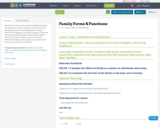
This lesson is meant to be a guide for Nebraska Family and Consumer Sciences teachers who may teach the following courses Human Development, Human Growth & Development, Child Development, Parenting, Interpersonal Relationships, Relationships, Family Living, Teen Living or Daily Living courses. Any additional readings and/or topics not included in the lesson plan should be marked N/A.
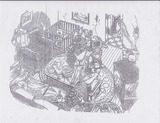
This resource originated from a training workshop in Domestic Violence Prevention and Awareness, to educate the community resource pesonnel of awareness of family strengths, often overlooked in times of crisis or need, when access to resources can upset the balance of family life.This discussion exercise used in the Family Relationships course (FAMLF131) serves as a means of sharing perspective to raise one's awareness and be open to critical thinking thought processes, especially to enhace the pathways of students pursuing the Social Sciences, Child Development, and Teaching and Nursing professions, to name a few.
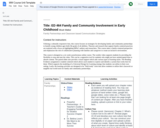
Utilizing a culturally responsive lens, this course focuses on strategies for developing family and community partnerships to benefit young children ages birth-5th grade of all abilities. Theories and research that support family-centered practices are explored with a focus on highlighting BIPoC authors and researchers. This course takes a family-centered perspective and emphasizes the role of collaborative planning with families and caregivers to create an inclusive environment.
This course is designed as a six week asynchronous online course. The weekly video supports students by providing the flexibility to stop and start the video. This can be a supportive tool for students who might not have uninterrupted time to absorb content. The paired slides also provide a visual support which aids various types of learning styles. The Reading Evidence assignment is student centered which allows each student to explore and identify a system that works best for them. Which supports the modeling of a Universal Design for Learning strategy that students can utilize in their own setting. Lastly, the learning activities are designed to be "field ready" tools that allow students to utilize their classwork as tangible real world tools for family and community partnerships.

This week in your reading, you were introduced to many of the pioneering theorists who have helped develop Early Childhood Education into what it is today. For this assignment, please create a a few slides (either PowerPoint or Google slide will work) of your favorite theorist in Child Development, either one you read about today or someone else you know about from other classes.You will do this with your group. Make sure you and your group communicate this week and begin to think about what theorist you will focus on. Once you have agreed on a theorist begin researching individually and come to class prepared so you can begin designing your slides as a group in-person. When slides are completed, have 1 person from your group upload the slides here!Slide Requirements:1. Tell us who they are.2. Why they are your favorite3. One thing you wish you could ask them.

To reinforce what we teach the child about having a growth mindset by rewarding them after putting effort into any task.

To offer the child alternative to stimming by providing him/her with a toy that could help the child cope with their emotions and self stimulate in a more appropriate and/or safe way.